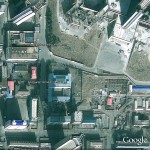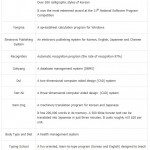According to the Choson Ilbo:
South Korean intelligence officials breathed a sigh of relief on Sunday. They had finally located Jon Il-chun, the head of a special department in North Korea’s Workers Party that manages Kim Jong-il’s slush fund. Jon, who had eluded intelligence officials for the past six months, was finally spotted on a North Korean TV broadcast featuring one of leader Kim Jong-il’s so-called on-the-spot guidance tours in Pyongyang.
The 69-year-old Jon went to high school with Kim (68) and was appointed head of the department, known as Room 39, early this year. It manages 17 overseas branch offices and around 100 trading companies and even owns a gold mine and a bank. The US$200-300 million those companies make each year is funneled into Kim’s secret bank accounts around the world.
Room 39 is targeted each time the U.S. and other foreign governments apply financial sanctions against North Korea. Kim replaced its head early this year because the former director, Kim Tong-un, was put on an EU list of sanctioned individuals late last year, making it impossible for him to manage the leader’s secret overseas bank accounts.
Due to the importance of the department and the clandestine nature of its business, the director of Room 39 rarely appears in public, but he sometimes accompanies Kim Jong-il on guidance tours when they involve organizations linked to Kim’s slush funds, an intelligence official said.
In the TV clip on Sunday, Jon is seen with Kim on an tour to Hyangmanlu, a popular restaurant, and Sonhung food manufacturing plant. A North Korean defector who used to live in Pyongyang, said the restaurant was built in the 1990s by a wealthy ethnic Korean from Japan and is located in a busy part of Pyongyang. “It was always packed with wealthy party officials,” the defector said, adding the party manages the restaurant so the entire proceeds probably go into Kim Jong-il’s coffers. He added there is a strong possibility that the food factory also belongs to the party.
The last time Jon appeared on North Korean TV was on June 20, at the opening of a mine in Yanggang Province. A North Korean source said the Huchang Mine is a famous copper mine that had been closed for some time but must have reopened. “Judging by the fact that Jon took part in the opening ceremony, it appears to be one of many mines run by Room 39.”
Jon was also spotted at Kim’s inspections of two fisheries companies last year and one this year. A Unification Ministry official said, “North Korean exports of fisheries products are handled by the party or the military and they’re sources of revenue for Kim Jong-il’s slush fund.” Fisheries products accounted for the second largest North Korea’s W1.64 trillion exports to South Korea last year, amounting to W173 billion or 16.3 percent. Textiles totaled W477 billion or 44.8 percent.
“This is one of the reasons why we blocked imports of North Korean fisheries products” following the North’s sinking of the Navy corvette Cheonan, the official said.
Additional Information:
1. Michael Madden has written a biography of Jon Il-chun here.
2. Here is a satellite image of the Hyangmanru Restaurant. Here is a satellite image of the Sohung Foodstuff Factory (right next door).
Read the full story here:
Elusive Manager of Kim Jong-il’s Slush Funds Pops Up Again
Choson Ilbo
12/15/2010


